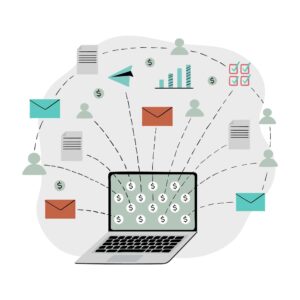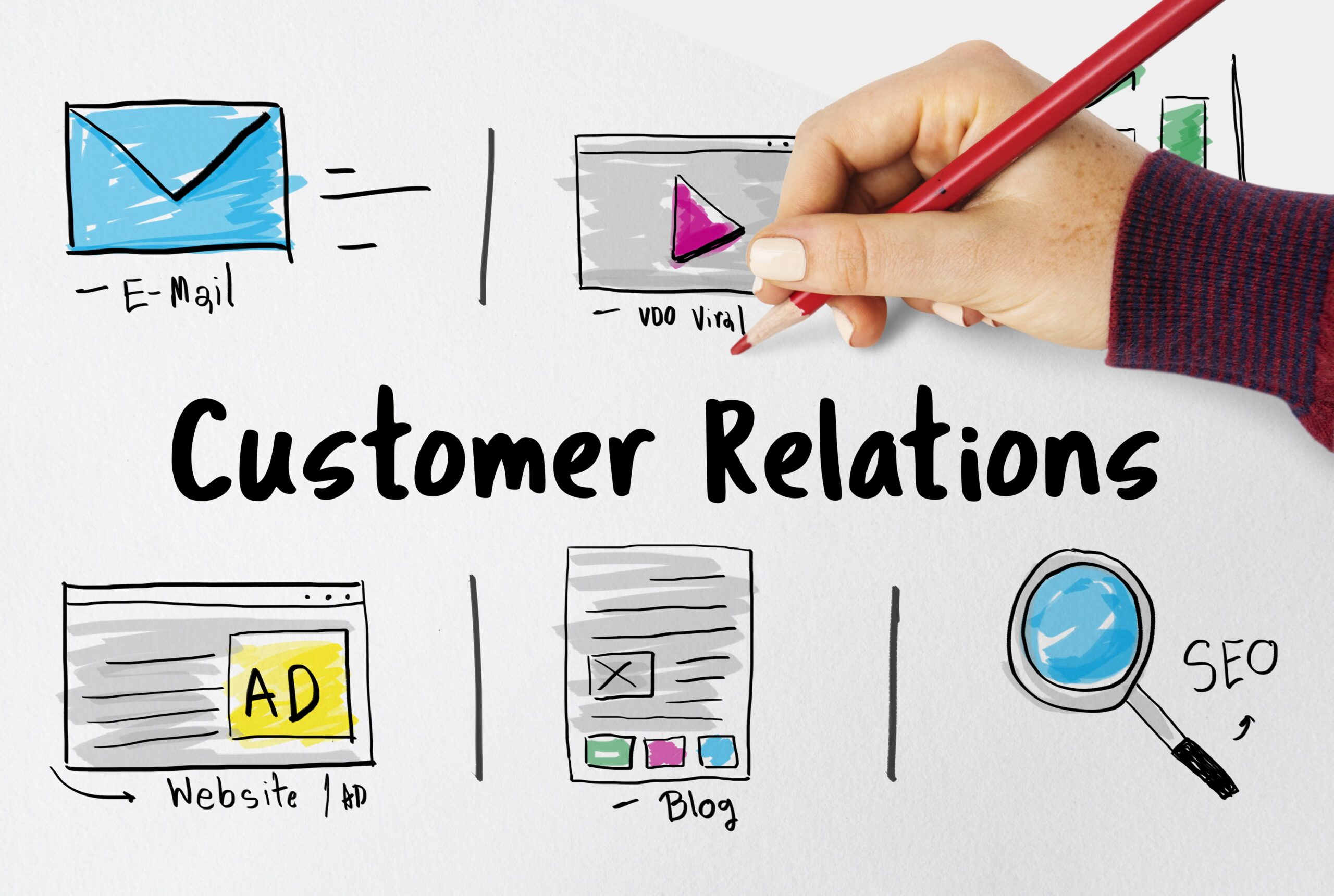Leveraging Analytics for Effective Email Marketing Success
Leveraging analytics in Email Marketing can feel like a daunting task.
Many marketers find themselves in a quandary, uncertain how to make use of data effectively. But this is what separates an average marketer from a data-driven marketing guru.
If you’re unsure about using advanced email analytics, chances are you’ll struggle to maximize your campaign’s potential.
The truth is… without utilizing these insights properly, reaching your email marketing goals becomes increasingly challenging. Leveraging analytics in Email Marketing doesn’t have to be intimidating; it’s all about understanding and applying the right strategies.
Table of Contents:
- The Power of Email Marketing Analytics
- Advantages of Personalization in Email Marketing
- Behavior-Triggered Emails as a Powerful Tool
- Hyper-Personalization through Advanced Email Analytics
- Harnessing Machine Learning in Email Automation
- Leveraging Audience-Based Segmentation for Better Engagement
- Adapting Your Strategy Based on Data Analysis
- Conclusion
- FAQs in Relation to Leveraging Analytics in Email Marketing

The Power of Email Marketing Analytics
It’s obvious that email is a formidable resource for marketers, considering the daily number of emails sent out for marketing purposes totals over 350 billion. However, to truly unlock its potential and see up to a 760% increase in revenue as some studies suggest, you need more than just an extensive email list or compelling content – you need analytics.
In essence, every interaction with an email campaign becomes part of this rich tapestry from which we draw our strategies. The open rates tell us about engagement levels; click-through rates hint at how persuasive our call-to-actions are; unsubscribe rates may indicate dissatisfaction or irrelevance.
Predictive Analytics: A Game Changer
No discussion on leveraging analytics would be complete without mentioning predictive analytics. This technology uses machine learning algorithms and historical data analysis to forecast future outcomes such as optimal times to send emails based on user activity patterns.
This level of sophistication allows marketers not only to predict but also to shape consumer behavior by delivering personalized messages right when they’re most likely receptive.
But it’s merely the tip of the iceberg when it comes to the benefits of predictive analytics. It provides actionable guidance for crafting engaging subject lines and CTAs, thereby increasing the likelihood of conversions and improving the overall effectiveness of campaigns.
Leveraging Customer Data for Improved Targeting
The beauty lies in the ability to use granular details gleaned from various touchpoints across the customer journey to inform the segmentation strategy.
For instance, if a certain segment of customers has shown interest in a specific product category in the past, then it might be prudent to target similar offerings moving forward to enhance the relevance and resonance of each message sent out to inbox subscribers.
Moreover, demographic information like location, age group, marital status, etc., further refines targeting efforts, ensuring maximum impact and reaching audience members who are actually interested in what you offer, hence driving higher sales figures and improved bottom-line performance for your business.
To put it simply, continuous refinement and a strategic approach backed by a solid foundation of robust analytical capabilities are key to unlocking the true power of this tool effectively.
Key Takeaway:
Analytics are the secret sauce to email marketing success. They unlock insights on engagement, guide predictive strategies and refine customer targeting for maximum impact. So, don’t just send emails; use analytics to make every message count.

Advantages of Personalization in Email Marketing
Email campaigns have developed extensively over time, and personalization has become a crucial factor. Amidst an avalanche of information online, businesses need to ensure their email content stands out and resonates with recipients.
The introduction of dynamic content is one way to achieve this. By tailoring emails based on customer data such as user characteristics, preferences, or past interactions, marketers can provide valuable insights that enhance the overall user experience.
Predictive Analytics and Personalization
Incorporating predictive analytics into your email marketing strategy takes personalization up a notch. Using historical data for future predictions allows you to identify optimal times for sending emails or crafting engaging subject lines likely to pique interest among your target audience.
Beyond timing optimization and compelling subjects lies another critical aspect: effective call-to-actions (CTAs). A strategically placed CTA could be the difference between passive readership versus active engagement leading potentially towards conversions. Moreover, it’s not just about predicting trends but also being able to adapt quickly when patterns change dynamically – thanks to machine learning algorithms combined with traditional statistical methods within these analytical tools. This enables brands to remain relevant amidst fluctuating consumer behaviors while maximizing the return on investment for each campaign launched.
- Diving Deeper Into Predictive Analysis:Apart from enhancing existing strategies by identifying ideal send times or formulating catchy headlines, there are other areas where predictive analysis proves beneficial too. For instance, if certain promotional emails yield high click-through rates during holiday seasons yet perform poorly otherwise, then adjusting frequency according to such findings would prove advantageous indeed. Campaign Monitor’s guide offers comprehensive insights into new rules for email marketing, including how best practices have evolved over time.
- Leveraging Machine Learning Algorithms:An essential part of evolution involves incorporating machine learning alongside traditional statistical methods to predictively analyze recipient behavior, providing more accurate personalized experiences every step of the way, thus ensuring maximum ROI for all efforts invested.
- Tailored Communications Yield Better Results:
Key Takeaway:
Personalization and predictive analytics are game-changers in email marketing. They allow for dynamic content, optimal send times, engaging subject lines, and effective CTAs that resonate with your audience. Combine these with machine learning to adapt swiftly to changing trends and maximize ROI.

Behavior-Triggered Emails as a Powerful Tool
Email marketing campaigns can transform into powerful tools when they’re behavior-triggered. These emails, sent based on the recipient’s actions or behaviors rather than at random intervals, have shown to be highly effective in increasing sales and engagement levels.
This strategy provides valuable insights about your target audience’s preferences and habits. Understanding these patterns allows you to send personalized content that resonates with them during different stages of their lifecycle, awareness, consideration, conversion, and significantly improves click-through rates (CTR).
Driving Conversions with Data-Driven Supply Chain Email Marketing
Data-driven supply chain email marketing leverages data analysis for improved targeting, a key aspect of any successful email marketing strategy. By analyzing past purchases and engagement levels within your existing customer base using predictive analytics techniques such as machine learning algorithms, marketers are able to create more relevant messages designed specifically around individual user patterns, thus driving conversions while simultaneously boosting revenue growth.
- Analyzing purchasing history for product recommendations
- Segmenting audiences based on browsing habits
- Sending timely reminders about abandoned carts
Segmented campaigns boast higher open rates compared to generic mass communications; this targeted approach not only improves CTR but also enhances the overall user experience.
The Role of Automation in Behavior-Triggered Emails
Email automation platforms like DirectIQ play a crucial role when implementing behavior-triggered strategies through features such as event-based triggers, where the action taken by a subscriber prompts an automatic response, ensuring timely interaction between the brand and consumers, leading to building stronger relationships over time.
By harnessing the potential offered through automation combined with behavioral analytics, one can effectively increase both reach and relevancy, resulting in ultimately meaningful connections made amongst prospective and existing clients alike, thereby boosting the overall campaign success rate significantly.
Therefore, embracing a combination of predictive analytics alongside machine learning techniques within the realm of email marketing proves to be an invaluable asset for the modern-day marketer looking to gain an edge in the competitive market landscape of today’s digital age. Hence, companies are turning to adopting advanced technologies in their daily operations to
Key Takeaway:
Harness the power of behavior-triggered emails and data-driven strategies in your email marketing campaigns. Use analytics to understand customer behaviors, personalize content, and boost conversions. Leverage automation for timely interactions, increasing reach and relevancy. Embrace predictive analytics and machine learning techniques to gain a competitive edge in today’s digital landscape.

Hyper-Personalization through Advanced Email Analytics
Email marketing has come a long way from the days of generic mass messages. Today, it’s all about personalizing your email content to cater to individual customer preferences and behaviors. And what makes this possible? It’s advanced email analytics.
This level of hyper-personalization does more than just increase brand recognition, it also drives sales and leads via inbound marketing by delivering relevant content at the right time.
Tapping into DirectIQ Campaign Reports for Improved Targeting
A key player in making sense of your audience data is an effective tool like campaign reports provided by leading platforms such as DirectIQ. These tools offer detailed insights that can be divided based on opens, clicks, locations, or even specific email clients used by recipients, allowing you to segment your target audience effectively.
Say goodbye to guesswork; with these valuable insights at hand, businesses can tailor their emails according to what resonates most with different segments within their target audience, for instance, designing mobile-friendly content sent out during morning hours if certain demographics tend towards opening emails then on mobile devices which could significantly boost click-through rates among this group. The power behind these features lies not only in sending targeted emails but doing so strategically using actionable intelligence gathered from user behavior patterns and preferences.
Ramping Up Sales Through Hyper-Personalized Content
Using advanced email analytics isn’t just about understanding customer data, it’s also about leveraging those insights for increased revenue generation. By studying past purchases or engagement levels, marketers create highly personalized product recommendations within each recipient’s mail, thus driving conversions substantially higher.

Harnessing Machine Learning in Email Automation
Machine learning is rapidly becoming a game-changer for email marketing. By examining and forecasting customer conduct, machine learning gives advertisers the data required to settle on educated choices about when and what sort of substance to convey. This makes machine learning an invaluable tool for enhancing your email automation efforts.
This personalization not only improves engagement rates but also enhances the overall user experience by delivering relevant content consistently.
Building Brand Recognition Through Consistent Communication
Maintaining consistent communication is key in building brand recognition among existing customers. Automated messages play a crucial role here as they keep you connected with your audience without overwhelming them.
But consistency doesn’t mean sending identical emails repeatedly; rather, it’s all about regularly delivering valuable content that aligns with recipients’ interests or needs at any given time.
This approach requires careful analysis of data, which can be achieved through leveraging advanced capabilities offered by machine-learning algorithms.
“Brands like Amazon use machine learning for personalized product recommendations within automated emails – this tactic has been proven effective in driving sales up substantially.”
Influencing Product Recommendations With Machine Learning
Email automation coupled with predictive analytics offers businesses the opportunity to serve highly tailored product suggestions to individual consumers based on their historical data and predicted future behavior patterns. These systems have shown effectiveness across various industries, from retail giants like Amazon down to small online stores, improving conversion rates while enhancing the overall customer experience and fostering long-term loyalty towards the brand.
Beyond Personalization: Predictive Customer Engagement
Predictive analytics, a subset of machine learning, takes personalization one step further by anticipating customers’ needs before they even realize them themselves. This technology analyzes numerous variables, including demographic information, behavioral data, purchase history, etc., allowing marketers to identify potential opportunities to increase engagement levels and drive conversions up.
Key Takeaway:
Key Takeaway: Machine learning is revolutionizing email marketing by predicting customer behavior and personalizing content. It’s not just about consistency, but delivering value through tailored communications. Predictive analytics take it a step further, anticipating needs for higher engagement and conversions. So don’t just send emails – smartly leverage data to connect.

Leveraging Audience-Based Segmentation for Better Engagement
Engagement is the cornerstone of any successful email marketing strategy. But how do you ensure your messages resonate with recipients? The answer lies in audience-based segmentation, a powerful tool that allows marketers to tailor their emails based on shared characteristics within their target audience.
This approach not only enhances relevance but also increases overall interaction with your email campaigns. Whether demographic data or behavioral patterns like past purchases and website interactions are used for segmentation entirely depends on what works best for your business and its unique customer base.
Increasing Revenue Through Effective Product Recommendations
Incorporating personalized product recommendations into an email can significantly increase sales among both new and existing customers. By tailoring these suggestions based on factors such as past purchases, browsing history, or even items left in shopping carts, brands can make every communication feel tailored to individual needs.
A well-placed recommendation doesn’t just sell a product, it sells an experience uniquely suited to the recipient’s tastes. To maximize this effect, consider including them at various stages of the customer journey: welcome emails, re-engagement campaigns, even post-purchase follow-ups all offer opportunities for personalization.
The Power of Behavioral Segmentation in Email Marketing
Slicing through cluttered mailboxes requires precision targeting, and nothing offers quite as sharp focus as behavioral segmentation does when applied strategically within the realm of email marketing. Dividing audiences by actions taken online (such as opening certain types of emails versus others, frequency of site visits, etc.) gives us the ability to create content that resonates deeply, thereby increasing click-through rates (CTR) and overall campaign performance.
Prioritizing Relevance Over Frequency with Predictive Analytics
Email overload is a common issue many consumers face today; receiving too much irrelevant information often leads to quick unsubscribe actions on the part of the receiver. However, predictive analytics comes to the rescue here: it helps identify optimal times to send out communications, ensuring they’re seen at the right moment and enhancing the chances of getting clicked upon, opened, further read, and explored.
Data analysis plays a crucial role in refining strategies over time, identifying trends and metrics that could signal potential
Key Takeaway:
Sharpen your email marketing strategy by harnessing the power of audience-based segmentation, personalized product recommendations, and behavioral targeting. Don’t bombard customers with emails; instead, use predictive analytics to deliver relevant content at just the right time for maximum engagement.

Adapting Your Strategy Based on Data Analysis
Data analysis is the backbone of a successful email marketing strategy. By analyzing performance metrics, observing user behaviour and making adjustments based on the information collected from your data, you can make sure that your email campaigns are always relevant and successful.
The ability to identify trends within these analytics can unlock opportunities or alert you to potential challenges in real-time. This continuous refinement process ensures that your campaigns remain effective and relevant as market conditions evolve.
Utilizing Feedback to Improve Your Email Content
Your target audience holds valuable insights into what works with your email content – whether they crave more informative articles or are looking for exclusive deals. Their feedback helps tailor future content according to their preferences, which will lead towards improved targeting in your subsequent email campaigns.
This kind of qualitative input adds depth beyond mere numbers like open rates or click-through rates; it provides context that enriches our understanding of customer engagement patterns. So don’t shy away from seeking direct responses – use interactive features such as polls within emails themselves.
Identifying Trends Through Advanced Analytics
Trends often emerge over time when we take a step back from individual campaign performances to look at historical data holistically. Perhaps there’s been an unexpected drop-off during certain periods each year? Or maybe specific types of content consistently outperform others? These nuggets could guide timing strategies around seasonal shifts while also informing future topic selection.
In today’s digital age, tools like Google Analytics provide advanced trend identification capabilities, allowing marketers deeper insight into their overall campaign effectiveness. Plus, many popular email marketing platforms integrate seamlessly with Google Analytics. The integration offers detailed reports directly accessible through platform dashboards, simplifying workflow processes considerably.
Key Takeaway:
Key Takeaway: Data analysis is your secret weapon in email marketing, shedding light on performance metrics and audience behavior. Feedback from recipients can fine-tune content to their liking, while advanced analytics reveal long-term trends for strategic planning. Remember: it’s not just about sending emails; it’s about learning from them.
Conclusion
It’s the secret sauce to skyrocketing your business.
With personalization, you can cut through the noise and reach your audience effectively.
Behavior-triggered emails are powerful tools that deliver timely, relevant content right when it matters most.
Diving into advanced email analytics allows for hyper-personalization that boosts brand recognition and drives sales.
An effective strategy doesn’t just boost sales but also helps avoid pitfalls and maximizes engagement with your target audience.
The power of machine learning enhances automation efforts while consistent communication builds strong brand recognition among customers.
Audience-based segmentation improves click-through rates significantly. Adapting strategies based on data analysis keeps you ahead of trends and opportunities.
DirectIQ, our Email Marketing solution, harnesses all these insights to give you an edge over competitors. With DirectIQ’s advanced features, leveraging analytics becomes less daunting – more exciting! Ready to transform your marketing strategy?
FAQs in Relation to Leveraging Analytics in Email Marketing
How can analytics help inform email marketing strategies?
Email analytics provide insights into customer behavior, engagement levels, and campaign performance. This data helps refine targeting, optimize content, and improve overall strategy for better results.
What are the key metrics to track when analyzing email campaigns?
The crucial metrics include open rates, click-through rates (CTR), conversion rates, bounce rates, unsubscribe rate, and growth of subscribers. These indicate recipient engagement and campaign effectiveness.
How can segmentation be used to improve email performance?
Segmentation divides your audience based on characteristics like demographics or behaviors. Tailoring emails to these segments improves relevance, which boosts opens, clicks, and conversions.
What techniques can be used to optimize subject lines for higher open rates?
To boost open rates, use compelling language in subject lines that sparks curiosity or urgency. Personalization with the recipient’s name or relevant details also enhances appeal.
How does A/B testing help optimize email campaigns?
A/B testing compares two versions of an element like a subject line or call-to-action button. The version yielding better results informs future design decisions, enhancing campaign success.












